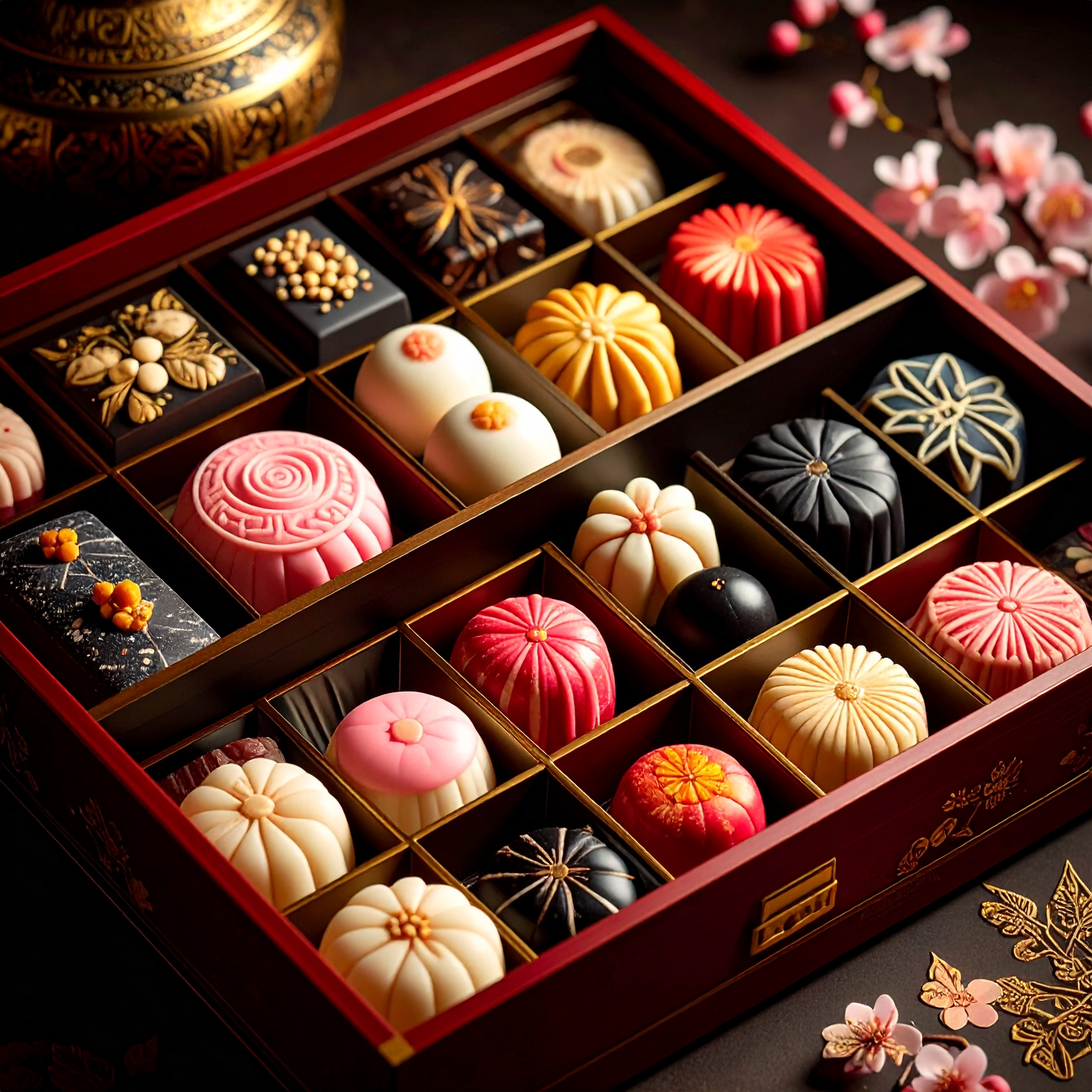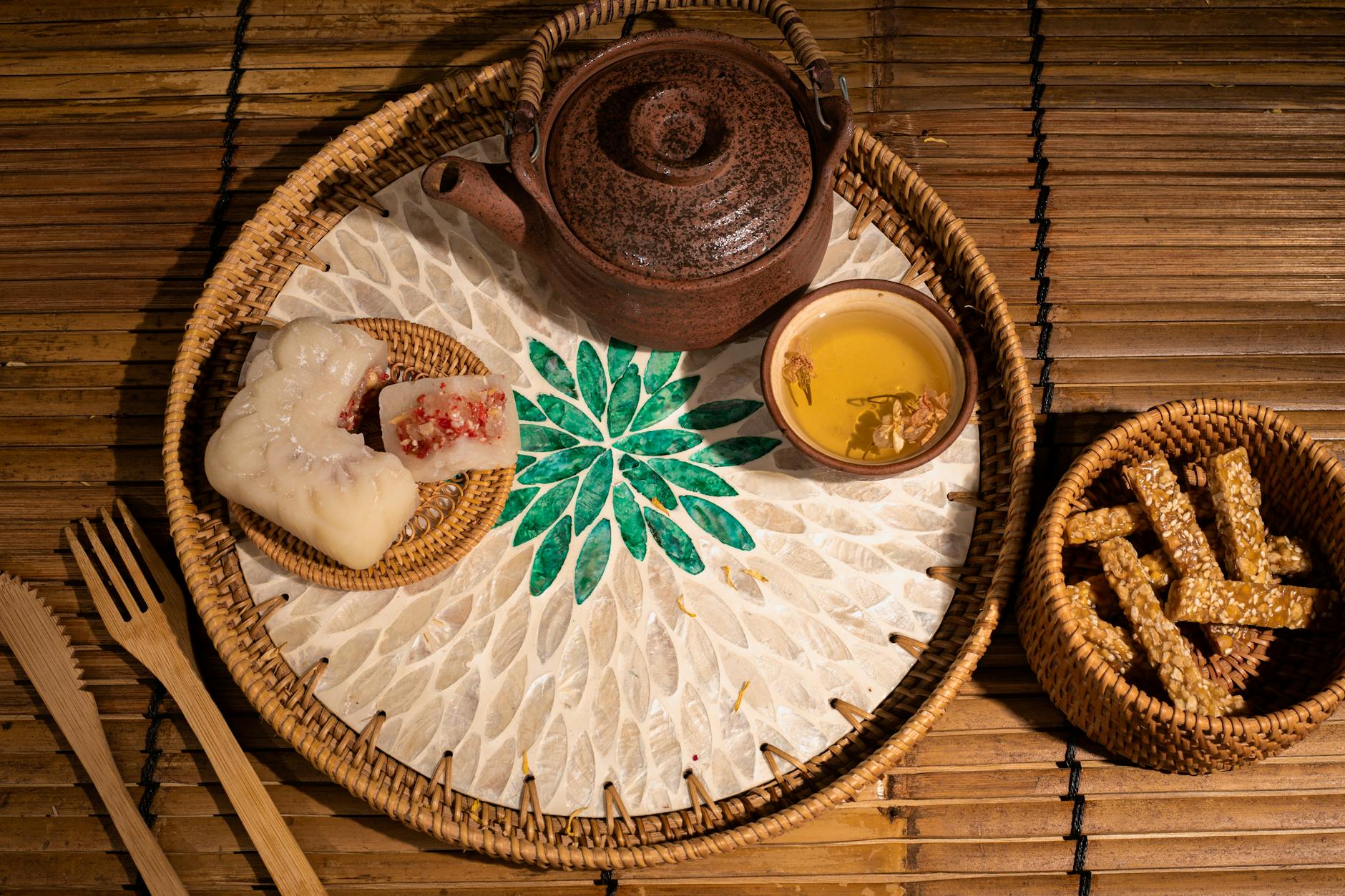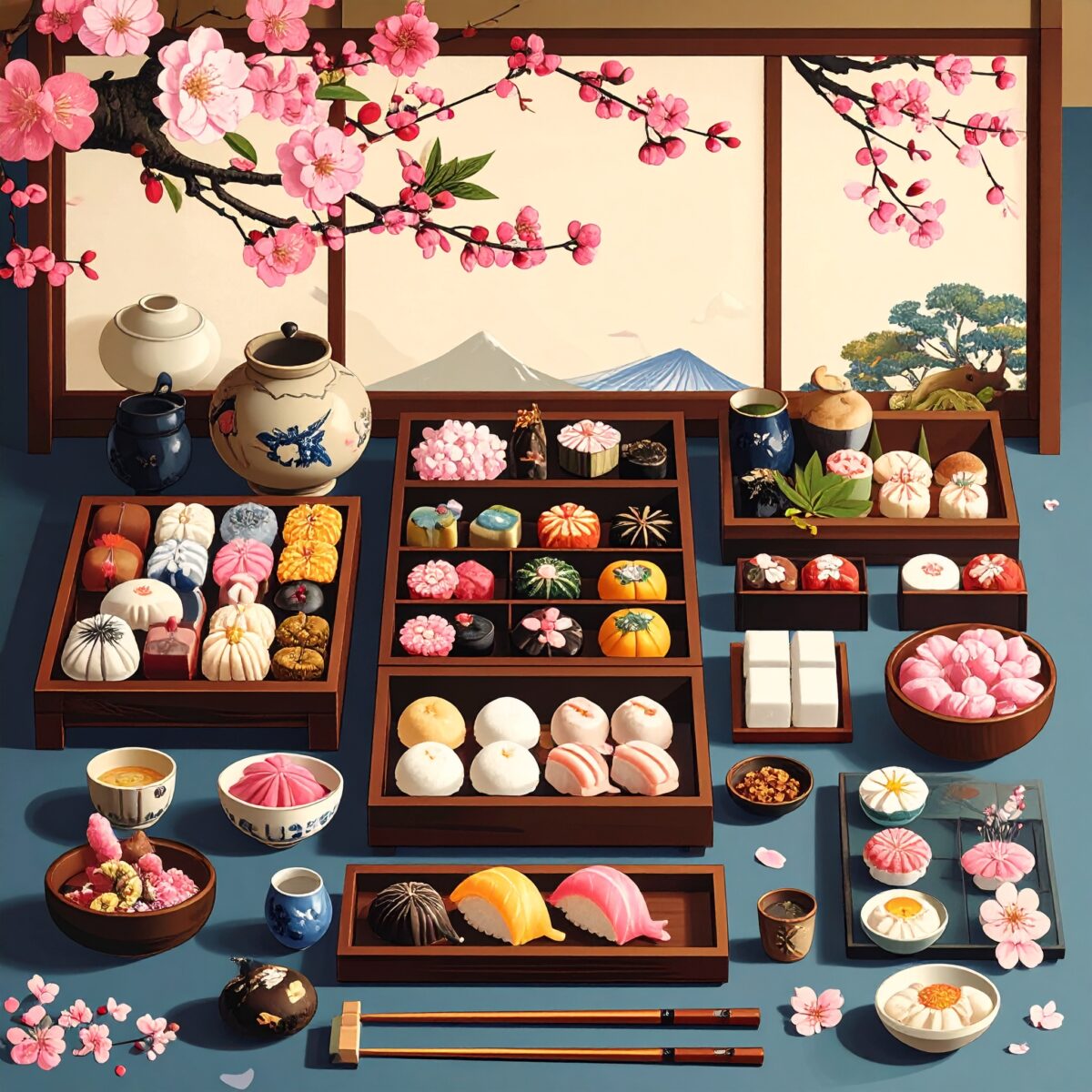Japan’s four seasons are not merely a natural phenomenon—they are woven deeply into everyday life, culture, and emotional expression. Among the most exquisite manifestations of this connection is wagashi: small, delicate confections that embody seasonality, narrative, craftsmanship, and aesthetic beauty in each single bite. Often referred to as “eat‑able works of art,” wagashi offer a fleeting glimpse into the Japanese appreciation for nuance, visible in their color, form, aroma, and taste.
The origins of wagashi extend back to ancient grain‑based sweets, the Tang Dynasty confections brought from China, and the influence of Buddhist temple cuisine and the tea ceremony. From the Muromachi to the Azuchi–Momoyama period, alongside the evolution of chanoyu (the way of tea), wagashi transcended mere food and became true artistry. The ethos of celebrating natural sweetness and dignifying appearance was firmly established during this era and continues to inspire today.
One of the most remarkable forms is jōnamagashi, crafted with such elegance they resemble miniature sculptures or paintings. Using ingredients like nerikiri (smooth bean paste), kōhī (sweet rice dough), and agar, these confections are colored with natural pigments and shaped with wooden tools, wire, or even the softness of the artisan’s palm. Their design—echoing seasonal flowers, leaves, or scenery—evokes a moment of serene wonder.
In spring, the delicate bloom of cherry blossoms; in summer, the elegance of morning glories; in autumn, the fiery hue of maple. Even winter is captured in snowflake motifs. Each piece does more than please the eye—it encapsulates the transient essence and emotion of its season, telling a miniature poetic story through taste and form.

At the heart of these confections lies the principle of “beauty in emptiness.” Wagashi often refrain from elaborate detail, leaving room for the beholder’s imagination to wander. By softening edges and allowing colors to gently bleed, artisans awaken the diner’s own emotional response—an approach mirrored in Japanese painting, architecture, and literature. In that sense, wagashi serve as miniature embodiments of a deeply rooted cultural sensitivity.
The flavor profile is equally delicate. In contrast to the indulgent sweetness of Western pastries, wagashi offer gentle sweetness that unfolds lightly on the palate and similarly fades. This refinement springs from both ingredient selection and technique. Utilizing naturally derived elements—such as azuki beans, rice flour, agar, kudzu starch, sugar, chestnut, yuzu, and matcha—with minimal processing allows each ingredient’s character to shine.
Wagashi also cannot be separated from when and how they are eaten. In the tea ceremony, the seasonal omogashi (main sweet) is crafted to harmonize with the day’s theme, the tea bowl, and the hanging scroll. It is the ritual of eating—matched with tea and space—that brings the confection to life. This holistic attention extends across the senses: vision, touch, taste, scent—and even time and space become part of the experience.
The true charm of wagashi resides in the artisan’s touch. Each confection is crafted with acute sensitivity—to moisture content, air temperature, humidity, even the angle and pressure of the tool at the fingertips. It is not mass-produced by machines, but born in that place, on that day, at that precise moment—an expression of ichi-go ichi-e, or the beauty of a single encounter. It is, in essence, edible craftsmanship.
In recent years, this refined world of Japanese sweets has attracted global attention—not merely as a form of “Japanese-style dessert,” but as a cultural icon steeped in tradition and aesthetic depth. Chefs and designers across Europe and North America frequently cite wagashi as inspiration—for its color palettes, compositional harmony, thoughtful use of ingredients, and its deep appreciation for time.
Even in Japan, a new generation of artisans and creatives is quietly redefining wagashi. They’re incorporating cacao and spices, experimenting with glass and ceramic presentations—innovations that preserve tradition while gently expanding its expression.
And yet, one timeless principle remains unchanged: the ethos of “making with care for someone else.” Wagashi are often chosen as gifts or for hospitality because they carry meaning beyond taste—an unspoken expression of respect. The rustle of wrapping paper, the beauty of a fold, the texture of washi paper—all convey the Japanese spirit of meticulous attentiveness.
At first glance, wagashi may seem delicate and small, but each one holds vastness: landscapes of nature, layers of cultural depth, and heartfelt intention. These confections offer moments of stillness within our busy lives—and it is in this quiet that their meaning deepens.
Wagashi are sweetness embodied and a crystallization of Japanese aesthetic sensibility. Though they may dissolve on the tongue, their lingering impression—its afterglow in the memory—endures long after.




